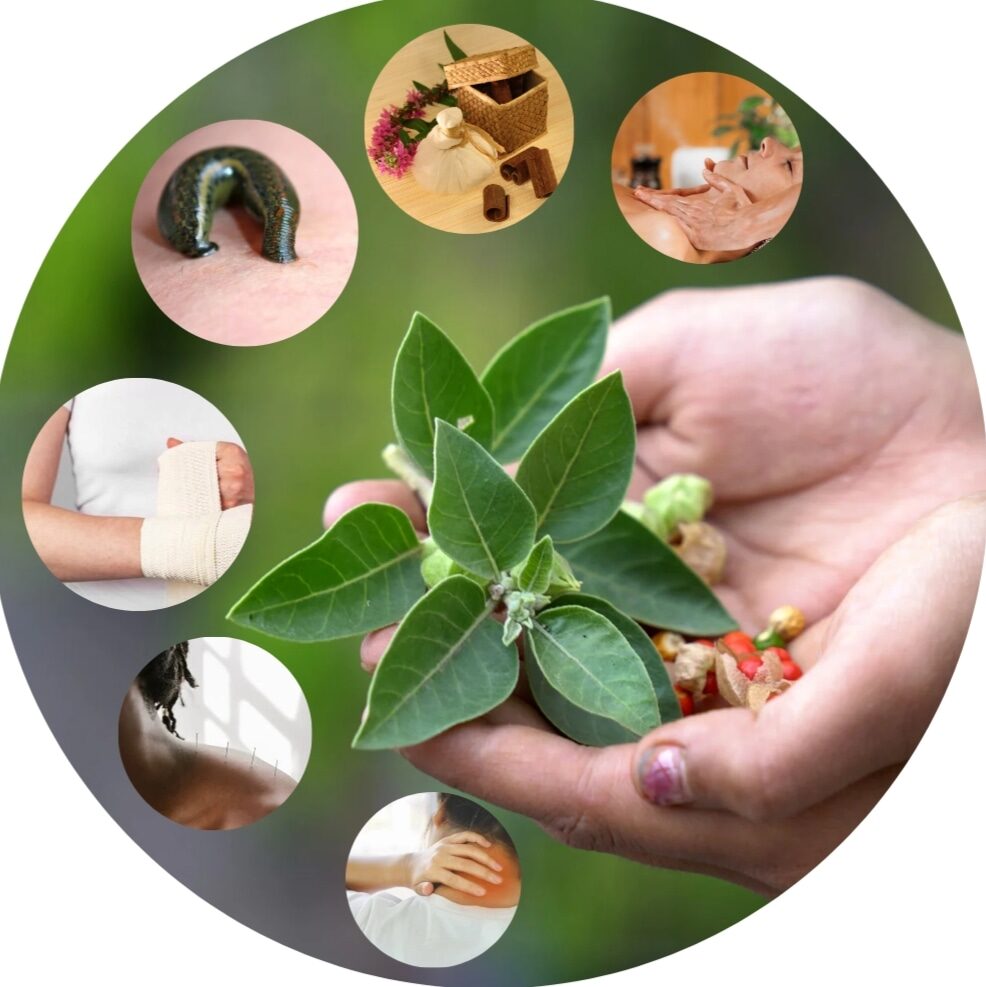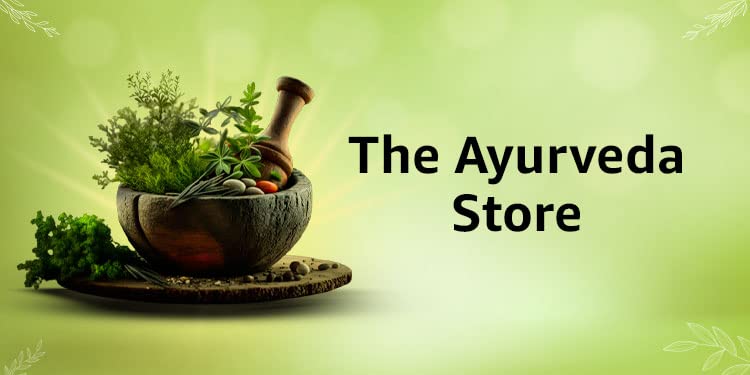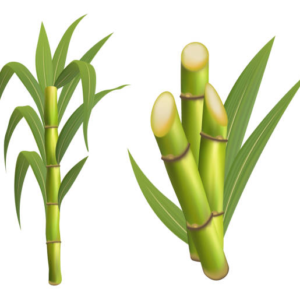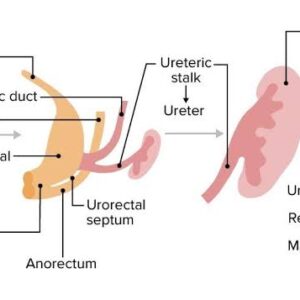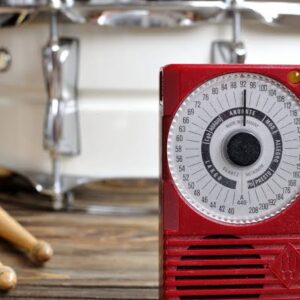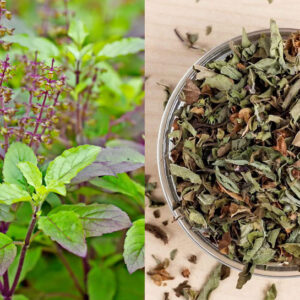Table of Contents
- 21. Snehopaga Mahakashaya Varga (Adjuvants of Oleation Therapy)
- 22. Swedopaga Mahakashaya Varga (Adjuvants of Sudation Therapy)
- 23. Vamanopaga Mahakashaya Varga (Sub-emetics)
- 24. Virechanopaga Mahakashaya Varga (Sub-purgatives)
- Introduction
- List of Virechanopaga Dravyas (Medicinal Plants of Virechanopaga Varga)
- Uses of Virechanopaga Varga
- Dosha Karma (Effect on Doshas)
- How Virechanopaga Varga Works
- Conclusion
- 25 Asthapanopaga Mahakashaya Varga (Adjuvants of Niruha Basti)
- Introduction
- List of Asthapanopaga Dravyas (Medicinal Plants of Asthapanopaga Varga)
- Uses of Asthapanopaga Varga
- Dosha Karma (Effect on Doshas)
- How Asthapanopaga Varga Works
- Conclusion
- 26. Anuvasanopaga Mahakashaya Varga (Adjuvants of Anuvasana Basti)
- 27. Shirovirechanopaga Mahakashaya Varga (Adjuvants of Nasya Karma)
- 28. Chardinigrahana Mahakashaya Varga (Anti-emetics)
- 29. Trashnanigrahana Mahakashaya Varga (Antidypsic Herbs)
- 30. Hikkanigrahana Mahakashaya Varga (Anti-Hiccup Herbs)
- Our Other articles
- References
21. Snehopaga Mahakashaya Varga (Adjuvants of Oleation Therapy)
Introduction
The Snehopaga Mahakashaya Varga consists of ten medicinal plants that act as adjuvants in Snehana Karma (Oleation Therapy). These herbs enhance the properties of medicated oils and ghee, supporting deep tissue nourishment, lubrication, and detoxification. They help in balancing Vata and Pitta Dosha, improving the absorption of Sneha Dravyas, and promoting rejuvenation and vitality.
List of Snehopaga Dravyas (Medicinal Plants of Snehopaga Varga)
| SI No | Name | Botanical Name | Rasa (Taste) | Guna (Properties) | Vipaka (Post-digestive effect) | Virya (Potency) | Active Compounds |
|---|---|---|---|---|---|---|---|
| 1 | Mradwika | Vitis vinifera | Madhura | Guru, Snigdha | Madhura | Shita | Resveratrol, Flavonoids |
| 2 | Madhuka | Glycyrrhiza glabra | Madhura | Guru, Snigdha | Madhura | Shita | Glycyrrhizin, Flavonoids |
| 3 | Madhuparni | Tinospora cordifolia | Tikta, Kashaya | Guru, Snigdha | Madhura | Ushna | Tinosporin, Alkaloids |
| 4 | Meda | Polygonatum verticillatum | Madhura | Guru, Snigdha | Madhura | Shita | Saponins, Polysaccharides |
| 5 | Vidari | Pueraria tuberosa | Madhura | Guru, Snigdha | Madhura | Shita | Isoflavonoids, Coumarins |
| 6 | Kakoli | Lillium polyphyllum | Madhura | Guru, Snigdha | Madhura | Shita | Alkaloids, Flavonoids |
| 7 | Kshira Kakoli | Lillium sp. | Madhura | Guru, Snigdha | Madhura | Shita | Glycosides, Saponins |
| 8 | Jivaka | Microstylis wallichii | Madhura | Guru, Snigdha | Madhura | Shita | Flavonoids, Sterols |
| 9 | Jivanti | Leptadenia reticulata | Madhura | Guru, Snigdha | Madhura | Shita | Leptadenosides, Alkaloids |
| 10 | Shalaparni | Desmodium gangeticum | Madhura, Tikta | Guru, Snigdha | Madhura | Shita | Isoflavones, Sterols |
Uses of Snehopaga Varga
- Enhances Snehana Karma – Supports the deep penetration of Sneha (medicated ghee/oil) into tissues.
- Improves Lubrication – Helps in managing dryness and stiffness in the body, beneficial for Vata disorders.
- Nourishes Dhatus (Tissues) – Supports Ojas (immunity), Bala (strength), and Rasayana (rejuvenation) properties.
- Supports Digestive Health – Some herbs in this group aid digestion and prevent heaviness caused by excess Sneha.
- Skin and Hair Health – Enhances skin glow, prevents dryness, and strengthens hair follicles.
- Rejuvenates the Nervous System – Strengthens the nervous system and reduces stress-related disorders.
- Balances Hormones – Acts as a natural hormonal modulator, supporting reproductive health.
Dosha Karma (Effect on Doshas)
- Vata Dosha: Highly effective in balancing dryness, roughness, and weakness caused by aggravated Vata.
- Pitta Dosha: Soothing and cooling for excess Pitta; helps reduce heat-related disorders.
- Kapha Dosha: Used in moderation as excessive Sneha intake can increase Kapha.
How Snehopaga Varga Works
- Supports Bioavailability of Sneha Dravyas
- These herbs enhance the absorption and utilization of ghee and oils in the body.
- Deep Tissue Penetration
- Facilitates Vyadhikshamatva (disease resistance) and Rasayana (rejuvenation).
- Enhances Metabolism
- Supports digestion and assimilation of Sneha, preventing digestive imbalances.
- Acts as an Adaptogen
- Helps adapt the body to stress and maintain overall balance.
Conclusion
The Snehopaga Mahakashaya Varga plays a vital role in Ayurvedic Oleation Therapy (Snehana Karma) by enhancing the absorption and efficacy of medicated ghee and oils. These ten powerful herbs help in nourishment, rejuvenation, skin health, and nervous system balance, making them essential in Panchakarma and Rasayana therapies.
22. Swedopaga Mahakashaya Varga (Adjuvants of Sudation Therapy)
Introduction
The Swedopaga Mahakashaya Varga consists of ten medicinal plants that act as adjuvants to Swedana Karma (Sudation Therapy). These herbs enhance the therapeutic effect of Swedana, facilitating detoxification, sweat induction, and deep tissue relaxation. They help in balancing Vata and Kapha Dosha, reducing stiffness, pain, and swelling.
List of Swedopaga Dravyas (Medicinal Plants of Swedopaga Varga)
| SI No | Name | Botanical Name | Rasa (Taste) | Guna (Properties) | Vipaka (Post-digestive effect) | Virya (Potency) | Active Compounds |
|---|---|---|---|---|---|---|---|
| 1 | Shobhanjana | Moringa oleifera | Katu, Tikta | Laghu, Ruksha | Katu | Ushna | Moringinine, Flavonoids |
| 2 | Eranda | Ricinus communis | Madhura, Tikta | Tikshna, Snigdha | Madhura | Ushna | Ricinoleic Acid, Alkaloids |
| 3 | Arka | Calotropis procera | Katu | Tikshna, Ruksha | Katu | Ushna | Calotropin, Flavonoids |
| 4 | Vraschira | Trianthema portulacastrum | Katu, Tikta | Laghu, Ruksha | Katu | Ushna | Saponins, Alkaloids |
| 5 | Punarnava | Boerhavia diffusa | Tikta, Kashaya | Laghu, Ruksha | Madhura | Ushna | Boeravinone, Flavonoids |
| 6 | Yava | Hordeum vulgare | Madhura | Laghu, Ruksha | Madhura | Shita | Beta-glucans, Polyphenols |
| 7 | Tila | Sesamum indicum | Madhura, Kashaya | Guru, Snigdha | Madhura | Ushna | Sesamin, Tocopherols |
| 8 | Kulattha | Dolichos biflorus | Kashaya, Tikta | Laghu, Ruksha | Katu | Ushna | Polyphenols, Proteins |
| 9 | Masha | Phaseolus mungo | Madhura | Guru, Snigdha | Madhura | Shita | Lecithins, Flavonoids |
| 10 | Badara | Ziziphus jujuba | Madhura, Amla | Guru, Snigdha | Madhura | Shita | Triterpenoids, Flavonoids |
Uses of Swedopaga Varga
- Enhances Swedana Karma – Supports effective perspiration and detoxification.
- Relieves Pain & Stiffness – Reduces muscular and joint stiffness, making it beneficial for arthritis and Vata disorders.
- Promotes Circulation – Increases blood flow to tissues, reducing toxins (Ama) and swelling.
- Supports Detoxification – Helps eliminate metabolic waste through sweat.
- Reduces Kapha Disorders – Beneficial in conditions like cold, congestion, and respiratory blockages.
- Balances Water Retention – Supports the management of edema (Shotha).
- Improves Skin Health – Opens up skin pores, enhancing glow and detoxification.
Dosha Karma (Effect on Doshas)
- Vata Dosha: Reduces dryness, stiffness, and pain by inducing perspiration.
- Kapha Dosha: Highly effective in liquefying Kapha and removing congestion.
- Pitta Dosha: Requires careful application, as excess Swedana may aggravate Pitta.
How Swedopaga Varga Works
- Promotes Sweat Production (Swedana)
- Stimulates sweat glands to release toxins.
- Opens Srotas (Microchannels)
- Improves circulation and oxygen supply to tissues.
- Acts as a Vasodilator
- Increases blood flow, reducing stiffness and pain.
- Supports Lymphatic Drainage
- Aids in removal of metabolic waste and excess fluids.
Conclusion
The Swedopaga Mahakashaya Varga enhances the therapeutic effect of Swedana Karma by improving perspiration, circulation, and detoxification. These ten powerful herbs are essential for managing Vata and Kapha disorders, making them valuable in Panchakarma therapies.
23. Vamanopaga Mahakashaya Varga (Sub-emetics)
Introduction
The Vamanopaga Mahakashaya Varga consists of ten medicinal plants that act as adjuvants to Vamana Karma (Therapeutic Emesis). These herbs enhance the effectiveness of primary Vamana Dravyas, helping to expel excessive Kapha Dosha, toxins (Ama), and undigested food. They aid in conditions like chronic cough, asthma, indigestion, and skin diseases.
List of Vamanopaga Dravyas (Medicinal Plants of Vamanopaga Varga)
| SI No | Name | Botanical Name | Rasa (Taste) | Guna (Properties) | Vipaka (Post-digestive effect) | Virya (Potency) | Active Compounds |
|---|---|---|---|---|---|---|---|
| 1 | Madhu | Honey | Kashaya, Madhura | Laghu, Ruksha | Madhura | Ushna | Flavonoids, Enzymes |
| 2 | Madhuka | Glycyrrhiza glabra | Madhura, Tikta | Guru, Snigdha | Madhura | Shita | Glycyrrhizin, Saponins |
| 3 | Kovidara | Bauhinia purpurea | Kashaya | Ruksha, Laghu | Katu | Shita | Flavonoids, Tannins |
| 4 | Karbudara | Bauhinia variegata | Kashaya | Ruksha, Laghu | Katu | Shita | Phytosterols, Alkaloids |
| 5 | Nipa | Anthocephalus cadamba | Kashaya | Ruksha, Laghu | Katu | Shita | Terpenoids, Glycosides |
| 6 | Vidula | Barringtonia acutangula | Kashaya | Ruksha, Tikshna | Katu | Shita | Saponins, Tannins |
| 7 | Bimbi | Coccinia indica | Kashaya, Katu | Ruksha, Laghu | Katu | Ushna | Beta-carotene, Triterpenoids |
| 8 | Shanapushpi | Crotalaria verrucosa | Tikta, Katu | Laghu, Tikshna | Katu | Ushna | Alkaloids, Flavonoids |
| 9 | Sadapushpa | Calotropis gigantea | Tikta, Katu | Tikshna, Sara | Katu | Ushna | Calotropin, Glycosides |
| 10 | Pratyakpushpa | Achyranthes aspera | Katu, Tikta | Laghu, Tikshna | Katu | Ushna | Ecdysteroids, Saponins |
Uses of Vamanopaga Varga
- Enhances Vamana Karma – Supports the emetic action of primary Vamana Dravyas like Madanaphala.
- Expels Excess Kapha – Helps in treating respiratory congestion, chronic cough, and asthma.
- Detoxifies the Body – Eliminates Ama (toxins) from the stomach and upper digestive tract.
- Treats Skin Disorders – Purifies blood, beneficial in eczema, psoriasis, and acne.
- Manages Indigestion – Helps in conditions like bloating, nausea, and sluggish digestion.
- Reduces Kapha-related Obesity – Clears excessive fat accumulation and water retention.
Dosha Karma (Effect on Doshas)
- Kapha Dosha: Reduces excess mucus and phlegm accumulation.
- Pitta Dosha: Helps balance excessive heat when used cautiously.
- Vata Dosha: Should be used carefully, as excessive emesis may cause dryness and weakness.
How Vamanopaga Varga Works
- Stimulates the Vomiting Reflex
- These herbs activate the emetic center in the brain to induce vomiting.
- Liquefies and Expels Mucus (Kapha)
- Dissolves thick phlegm and expels it from the stomach and lungs.
- Cleanses Stomach & Upper Digestive Tract
- Removes toxins and unprocessed food that contribute to diseases.
- Improves Metabolism & Digestion
- Enhances Agni (digestive fire) by eliminating undigested material.
Conclusion
The Vamanopaga Mahakashaya Varga strengthens Vamana Karma (therapeutic emesis) by aiding in Kapha elimination, detoxification, and respiratory health. These herbs are essential for managing chronic cough, skin disorders, indigestion, and metabolic imbalances, making them vital in Panchakarma therapies.
24. Virechanopaga Mahakashaya Varga (Sub-purgatives)
Introduction
The Virechanopaga Mahakashaya Varga includes ten medicinal plants that support Virechana Karma (therapeutic purgation). These herbs enhance the action of Virechana Dravyas like Trivrit (Operculina turpethum), helping in the elimination of excessive Pitta Dosha and toxins (Ama) from the intestines. They are beneficial in liver disorders, skin diseases, chronic constipation, and metabolic imbalances.
List of Virechanopaga Dravyas (Medicinal Plants of Virechanopaga Varga)
| SI No | Name | Botanical Name | Rasa (Taste) | Guna (Properties) | Vipaka (Post-digestive effect) | Virya (Potency) | Active Compounds |
|---|---|---|---|---|---|---|---|
| 1 | Draksha | Vitis vinifera | Madhura | Guru, Snigdha | Madhura | Shita | Resveratrol, Flavonoids |
| 2 | Kashmarya | Gmelina arborea | Madhura, Katu | Laghu, Ruksha | Ushna | Ushna | Lignans, Alkaloids |
| 3 | Parushaka | Grewia asiatica | Madhura | Guru, Snigdha | Madhura | Shita | Anthocyanins, Polyphenols |
| 4 | Abhaya | Terminalia chebula | Madhura, Kashaya | Laghu, Ruksha | Ushna | Ushna | Tannins, Gallic acid |
| 5 | Amalaka | Emblica officinalis | Pancharasa (except Lavana) | Ruksha, Laghu | Madhura | Shita | Vitamin C, Phyllembelic acid |
| 6 | Vibhitaka | Terminalia bellirica | Kashaya | Ruksha, Laghu | Madhura | Ushna | Tannins, Beta-sitosterol |
| 7 | Kuvala | Zizyphus sativa | Madhura, Kashaya | Picchila, Guru | Madhura | Shita | Saponins, Flavonoids |
| 8 | Badara | Zizyphus mauritiana | Madhura, Amla, Kashaya | Picchila, Guru | Madhura | Shita | Vitamin C, Polyphenols |
| 9 | Karkandhu | Zizyphus nummularia | Madhura, Kashaya | Picchila, Guru | Madhura | Shita | Triterpenoids, Alkaloids |
| 10 | Pilu | Salvadora persica | Madhura, Amla, Kashaya, Tikta | Laghu, Snigdha | Katu | Ushna | Alkaloids, Glucosinolates |
Uses of Virechanopaga Varga
- Enhances Virechana Therapy – Supports the action of primary purgative herbs like Trivrit and Eranda.
- Eliminates Excess Pitta – Removes excessive heat and toxins from the intestines and liver.
- Relieves Chronic Constipation – Regulates bowel movements and treats digestive sluggishness.
- Purifies Blood – Helps in skin diseases like acne, psoriasis, and eczema.
- Manages Liver & Gallbladder Disorders – Beneficial in jaundice, fatty liver, and gallstones.
- Improves Digestion & Metabolism – Strengthens Agni (digestive fire) and enhances nutrient absorption.
- Reduces Inflammation – Helpful in conditions like ulcerative colitis and gastritis.
Dosha Karma (Effect on Doshas)
- Pitta Dosha: Reduces excess heat and bile accumulation.
- Kapha Dosha: Helps in clearing mucus-related congestion.
- Vata Dosha: Should be used cautiously to prevent excessive dryness and depletion.
How Virechanopaga Varga Works
- Stimulates Intestinal Peristalsis
- Enhances bowel movements to expel toxins and waste products.
- Promotes Liver Detoxification
- Supports liver function, improving bile secretion and fat metabolism.
- Reduces Inflammation in the Gut
- Calms hyperacidity, ulcers, and colonic irritation.
- Enhances Nutrient Absorption
- By clearing digestive blockages, it improves metabolism and energy production.
Conclusion
The Virechanopaga Mahakashaya Varga is essential for Virechana Karma (purgation therapy). It plays a vital role in detoxification, digestion, and liver health, making it highly beneficial for treating Pitta-related disorders like acidity, liver dysfunction, and skin ailments.
25 Asthapanopaga Mahakashaya Varga (Adjuvants of Niruha Basti)
Introduction
The Asthapanopaga Mahakashaya Varga consists of ten medicinal plants that act as adjuvants to Asthapana Basti (Niruha Basti – Decoction Enema). These herbs enhance the therapeutic effects of medicated enemas, which are mainly used for Vata disorders, detoxification, and rejuvenation. They assist in the proper elimination of toxins from the colon, balance doshas, and improve bowel function.
List of Asthapanopaga Dravyas (Medicinal Plants of Asthapanopaga Varga)
| SI No | Name | Botanical Name | Rasa (Taste) | Guna (Properties) | Vipaka (Post-digestive effect) | Virya (Potency) | Active Compounds |
|---|---|---|---|---|---|---|---|
| 1 | Trivrit | Operculina turpethum | Katu, Tikta | Laghu, Ruksha, Tikshna | Ushna | Ushna | Glycosides, Resins |
| 2 | Bilva | Aegle marmelos | Katu, Tikta | Laghu, Ruksha | Ushna | Anushna | Alkaloids, Flavonoids |
| 3 | Pippali | Piper longum | Madhura, Katu | Laghu, Snigdha | Madhura | Ushna | Piperine, Alkaloids |
| 4 | Kushtha | Saussurea lappa | Tikta, Katu | Laghu, Ruksha | Katu | Ushna | Costunolide, Alkaloids |
| 5 | Sarshapa | Brassica nigra | Katu, Tikta | Tikshna, Laghu, Ruksha | Katu | Ushna | Glucosinolates, Sinigrin |
| 6 | Vacha | Acorus calamus | Katu, Tikta | Laghu, Ruksha, Tikshna | Katu | Ushna | Beta-asarone, Alkaloids |
| 7 | Vatsakaphala | Holarrhena antidysenterica | Katu, Tikta | Laghu, Ruksha | Katu | Shita | Conessine, Tannins |
| 8 | Shatapushpa | Anethum graveolens | Katu, Tikta, Madhura | Laghu, Snigdha | Madhura | Ushna | Essential Oils, Flavonoids |
| 9 | Madhuka | Glycyrrhiza glabra | Madhura, Tikta | Guru, Snigdha | Madhura | Shita | Glycyrrhizin, Flavonoids |
| 10 | Madanaphala | Randia dumetorum | Katu, Tikta | Laghu, Ruksha, Tikshna | Katu | Ushna | Alkaloids, Saponins |
Uses of Asthapanopaga Varga
- Enhances the Effects of Asthapana Basti – Supports the action of main Basti dravyas like Dashamoola and Triphala.
- Balances Vata Dosha – Helps in treating arthritis, neurological disorders, and constipation.
- Detoxifies the Colon – Removes Ama (toxins) from the intestines, improving digestive health.
- Relieves Chronic Constipation – Stimulates peristalsis, making bowel movements smoother.
- Supports Respiratory Health – Some herbs like Pippali and Vacha help in asthma and bronchitis.
- Promotes Anti-inflammatory Effects – Useful in rheumatoid arthritis and inflammatory bowel diseases.
- Improves Skin Disorders – By detoxifying the system, it helps in eczema, acne, and psoriasis.
Dosha Karma (Effect on Doshas)
- Vata Dosha: Helps in pacifying excessive Vata, which causes constipation, dryness, and joint disorders.
- Pitta Dosha: Some herbs like Madhuka and Bilva help in soothing Pitta-related digestive issues.
- Kapha Dosha: Clears excess mucus and congestion, especially Sarshapa and Pippali.
How Asthapanopaga Varga Works
- Promotes Detoxification
- Herbs like Trivrit and Madanaphala help in eliminating deep-seated toxins through the colon.
- Stimulates Digestion
- Supports Agni (digestive fire) and relieves indigestion, bloating, and gas.
- Reduces Inflammation
- Kushtha, Sarshapa, and Pippali act as natural anti-inflammatory agents.
- Strengthens the Gut Lining
- Herbs like Bilva and Madhuka protect and heal the intestinal mucosa.
Conclusion
The Asthapanopaga Mahakashaya Varga plays a vital role in enhancing the therapeutic effects of Asthapana Basti (Niruha Basti). These herbs help in detoxification, digestion, inflammation control, and Vata balancing, making them highly beneficial for treating chronic constipation, joint disorders, and metabolic imbalances.
26. Anuvasanopaga Mahakashaya Varga (Adjuvants of Anuvasana Basti)
Introduction
The Anuvasanopaga Mahakashaya Varga consists of ten medicinal plants that act as adjuvants to Anuvasana Basti (Oil-Based Enema). These herbs enhance the efficacy of oil-based enemas, which are primarily used to nourish, lubricate, and balance Vata dosha. This group of plants helps in strengthening the nervous system, reducing dryness, and improving musculoskeletal health.
List of Anuvasanopaga Dravyas (Medicinal Plants of Anuvasanopaga Varga)
| SI No | Name | Botanical Name | Rasa (Taste) | Guna (Properties) | Vipaka (Post-digestive effect) | Virya (Potency) | Active Compounds |
|---|---|---|---|---|---|---|---|
| 1 | Rasna | Pluchea lanceolata | Tikta | Laghu, Ruksha | Katu | Ushna | Flavonoids, Alkaloids |
| 2 | Suradaru (Devdaru) | Cedrus deodara | Tikta, Katu | Laghu, Ruksha | Katu | Ushna | Cedrol, Essential oils |
| 3 | Bilva | Aegle marmelos | Katu | Guru, Snigdha | Katu | Ushna | Alkaloids, Flavonoids |
| 4 | Madana | Randia dumetorum | Katu, Tikta | Laghu, Ruksha | Katu | Ushna | Saponins, Alkaloids |
| 5 | Vraschira | Trianthema portulacastrum | Tikta, Katu | Laghu, Snigdha | Katu | Ushna | Triterpenoids, Glycosides |
| 6 | Shatapushpa | Anethum sowa | Madhura, Tikta | Laghu, Ruksha | Katu | Ushna | Essential oils, Coumarins |
| 7 | Punarnava | Boerhavia diffusa | Tikta, Madhura | Guru, Snigdha | Madhura | Shita | Boeravinones, Alkaloids |
| 8 | Shwadamshtra | Tribulus terrestris | Tikta, Madhura | Guru, Snigdha | Madhura | Shita | Saponins, Flavonoids |
| 9 | Agnimantha | Premna mucronata | Tikta, Kashaya | Laghu, Ruksha | Katu | Ushna | Phenolics, Tannins |
| 10 | Shyonaka | Oroxylum indicum | Tikta, Kashaya | Laghu, Ruksha | Katu | Ushna | Flavonoids, Alkaloids |
Uses of Anuvasanopaga Varga
- Enhances the Effects of Anuvasana Basti – Supports the action of main oil-based Basti dravyas like Tila Taila and Sahacharadi Taila.
- Balances Vata Dosha – Helps in treating neurological disorders, joint pain, and dryness-related issues.
- Nourishes Tissues (Dhatu Poshana) – Strengthens muscles, bones, and nerves.
- Improves Digestion and Absorption – Supports intestinal lubrication and prevents dryness-induced constipation.
- Reduces Inflammation – Beneficial in arthritis, spondylitis, and fibromyalgia.
- Promotes Rejuvenation – Works as a Rasayana (rejuvenative) for long-term health and vitality.
- Enhances Skin and Hair Health – Lubricates the body from within, preventing dryness, roughness, and premature aging.
Dosha Karma (Effect on Doshas)
- Vata Dosha: Deeply pacifies Vata, especially in joint pain, dryness, and nervous system disorders.
- Pitta Dosha: Some cooling herbs like Punarnava and Shatapushpa help in soothing excess Pitta.
- Kapha Dosha: Supports metabolic function and prevents excessive Kapha accumulation.
How Anuvasanopaga Varga Works
- Provides Deep Nourishment
- Oil-based enemas combined with these herbs strengthen the nervous system, bones, and muscles.
- Lubricates the Colon
- Helps in preventing dry constipation and improves overall bowel health.
- Reduces Inflammation and Pain
- Anti-inflammatory herbs like Devdaru, Rasna, and Agnimantha reduce swelling and stiffness in joints.
- Improves Nerve Function
- Herbs like Shyonaka and Shatapushpa enhance nerve conduction and reduce nerve-related pain.
Conclusion
The Anuvasanopaga Mahakashaya Varga plays a crucial role in enhancing the therapeutic effects of Anuvasana Basti (Oil-Based Enema). These herbs nourish, strengthen, and lubricate the body, making them essential for treating neurological, musculoskeletal, and chronic Vata disorders.
27. Shirovirechanopaga Mahakashaya Varga (Adjuvants of Nasya Karma)
Introduction
The Shirovirechanopaga Mahakashaya Varga consists of ten medicinal plants that enhance the efficacy of Nasya Karma (nasal administration therapy). These herbs support the elimination of toxins (Shirovirechana), clearing nasal passages, improving cognitive function, and balancing Kapha dosha. They are pungent, light, and sharp in nature, which helps in removing excess mucus, stimulating circulation, and improving nervous system function.
List of Shirovirechanopaga Dravyas (Medicinal Plants for Nasya Karma)
| SI No | Name | Botanical Name | Rasa (Taste) | Guna (Properties) | Vipaka (Post-digestive effect) | Virya (Potency) | Active Compounds |
|---|---|---|---|---|---|---|---|
| 1 | Jyotishmati | Celastrus paniculatus | Katu, Tikta | Laghu, Ruksha | Katu | Ushna | Sesquiterpenes, Alkaloids |
| 2 | Kshavaka | Centipeda orbicularis | Katu | Tikshna, Snigdha | Katu | Ushna | Flavonoids, Essential oils |
| 3 | Maricha | Piper nigrum | Katu | Tikshna, Laghu | Katu | Ushna | Piperine, Alkaloids |
| 4 | Pippali | Piper longum | Tikshna, Laghu | Madhura | Anushna | Alkaloids | Piperlongumine, Essential oils |
| 5 | Vidanga | Embelia ribes | Katu | Ruksha, Laghu | Katu | Ushna | Embelin, Tannins |
| 6 | Shigru | Moringa oleifera | Katu, Kashaya | Ruksha, Tikshna | Katu | Ushna | Glucosinolates, Flavonoids |
| 7 | Sarshapa | Brassica nigra | Katu, Tikta | Tikshna, Snigdha | Katu | Ushna | Mustard oils, Alkaloids |
| 8 | Apamarga Tandula | Seeds of Achyranthes aspera | Katu, Tikta | Laghu, Ruksha | Katu | Shita | Alkaloids, Saponins |
| 9 | Shweta | Clitoria ternatea | Madhura, Tikta, Kashaya | Laghu, Ruksha | Katu | Shita | Anthocyanins, Flavonoids |
| 10 | Mahashweta | Clitoria ternatea (white variety) | Tikta, Kashaya | Laghu, Ruksha | Katu | Shita | Triterpenoids, Glycosides |
Uses of Shirovirechanopaga Varga
- Enhances the Effects of Nasya Karma – Supports main Nasya dravyas in cleansing the nasal passages and expelling toxins.
- Clears Sinuses and Kapha Accumulation – Helps in treating sinusitis, congestion, and chronic headaches.
- Improves Brain Function – Herbs like Jyotishmati and Shweta (Clitoria ternatea) are known as Medhya Rasayana, improving memory and intelligence.
- Stimulates Blood Circulation – Pungent herbs like Maricha, Pippali, and Sarshapa improve blood flow and oxygen supply to the brain.
- Reduces Headaches and Migraines – Beneficial in Vata-Kapha-related headaches, heaviness in the head, and neuralgia.
- Balances Prana Vata – Supports the function of Prana Vayu, which governs mental clarity, sensory perception, and nervous function.
- Enhances Respiratory Health – Clears mucus, prevents infections, and improves lung function.
Dosha Karma (Effect on Doshas)
- Vata Dosha: Helps in reducing dryness, tremors, and nervous system imbalances.
- Pitta Dosha: Cooling herbs like Shweta and Mahashweta help in calming excess Pitta.
- Kapha Dosha: Most herbs in this varga are Kapha-reducing, helping in removing excess mucus and congestion.
How Shirovirechanopaga Varga Works
- Clears and Detoxifies the Head Region
- Pungent and sharp herbs help in expelling toxins and balancing the doshas in the head.
- Stimulates Cognitive Function
- Herbs like Jyotishmati, Shweta, and Vidanga act as nootropics, improving memory, focus, and concentration.
- Opens Up Nasal Passages
- Strong decongestants like Sarshapa, Maricha, and Apamarga Tandula help in clearing blocked sinuses and improving airflow.
- Balances the Nervous System
- Medhya Rasayanas like Shweta and Mahashweta help in calming anxiety, stress, and mental fatigue.
Conclusion
The Shirovirechanopaga Mahakashaya Varga plays a vital role in supporting and enhancing the effects of Nasya Karma (Nasal Therapy). These herbs help in clearing sinuses, improving cognitive function, balancing Vata and Kapha doshas, and promoting overall mental and respiratory health.
28. Chardinigrahana Mahakashaya Varga (Anti-emetics)
Introduction
The Chardinigrahana Mahakashaya Varga includes ten medicinal plants that help control vomiting (Chardi) and nausea by pacifying the causative doshas of emesis (mainly Pitta and Kapha). These herbs work by soothing the stomach lining, regulating digestive fire (Agni), and balancing excessive acidity.
List of Chardinigrahana Dravyas (Anti-emetic Herbs)
| SI No | Name | Botanical Name | Rasa (Taste) | Guna (Properties) | Vipaka (Post-digestive effect) | Virya (Potency) | Active Compounds |
|---|---|---|---|---|---|---|---|
| 1 | Jambupallava | Eugenia jambolana (tender leaves) | Kashaya | Laghu, Ruksha | Katu | Shita | Tannins, Flavonoids |
| 2 | Amrapallava | Mangifera indica (tender leaves) | Kashaya | Laghu, Ruksha | Katu | Shita | Polyphenols, Mangiferin |
| 3 | Matulunga | Citrus medica | Amla | Laghu, Snigdha | Madhura | Shita | Citric acid, Vitamin C |
| 4 | Amlabadara | Zizyphus jujuba | Madhura | Laghu, Snigdha | Madhura | Shita | Saponins, Flavonoids |
| 5 | Dadima | Punica granatum | Madhura, Kashaya, Amla | Guru, Picchila | Madhura | Anushna | Punicalagins, Anthocyanins |
| 6 | Yava | Hordeum vulgare | Kashaya, Madhura | Laghu | Shita | Shita | Beta-glucans, Fiber |
| 7 | Yashtimadhu | Glycyrrhiza glabra | Madhura | Guru, Snigdha | Madhura | Shita | Glycyrrhizin, Saponins |
| 8 | Ushira | Vetiveria zizanoides | Tikta | Laghu, Snigdha | Madhura | Shita | Essential oils, Terpenoids |
| 9 | Mud | Parched grains | Kashaya, Madhura | Laghu | Katu | Shita | Fiber, Minerals |
| 10 | Laja | Puffed rice | Madhura, Kashaya | Laghu | Madhura | Shita | Starch, Carbohydrates |
Uses of Chardinigrahana Varga
- Controls Vomiting and Nausea – Regulates Pitta and Kapha dosha, preventing excessive acid secretion and mucus accumulation.
- Soothes Gastric Irritation – Herbs like Yashtimadhu, Ushira, and Dadima protect the stomach lining from inflammation.
- Balances Pitta Dosha – Cooling herbs like Amlabadara, Ushira, and Matulunga reduce excessive heat in the body.
- Improves Digestion – Jambupallava and Yava regulate Agni and prevent indigestion-related vomiting.
- Prevents Dehydration – Laja and Mud (puffed rice, parched grains) help retain fluids and electrolytes.
- Aids Morning Sickness and Motion Sickness – Beneficial for pregnancy-induced nausea, travel sickness, and gastritis-related vomiting.
Dosha Karma (Effect on Doshas)
- Pacifies Pitta and Kapha: These herbs cool excessive heat, reduce acidity, and clear mucus from the digestive tract.
- Mild action on Vata: Laja and Yava provide light nourishment without aggravating dryness.
How Chardinigrahana Varga Works
- Neutralizes Excessive Acid Secretion
- Herbs like Matulunga, Dadima, and Yashtimadhu act as natural antacids, reducing acid reflux and vomiting.
- Regulates Digestion and Improves Absorption
- Jambupallava and Amrapallava help in stabilizing Agni (digestive fire), preventing indigestion and food intolerance.
- Cools and Calms the Gastrointestinal Tract
- Ushira, Yashtimadhu, and Amlabadara have anti-inflammatory and cooling properties that soothe the gut.
- Strengthens the Stomach Lining
- Dadima and Yava help in repairing gastric mucosa, reducing ulcers, and preventing further irritation.
Conclusion
The Chardinigrahana Mahakashaya Varga plays an essential role in controlling vomiting, reducing gastric irritation, and balancing Pitta-Kapha dosha. These herbs work effectively in treating nausea, gastritis, motion sickness, and acid reflux, making them valuable in Ayurvedic treatments.
29. Trashnanigrahana Mahakashaya Varga (Antidypsic Herbs)
Introduction
The Trashnanigrahana Mahakashaya Varga consists of ten medicinal plants that help mitigate excessive thirst (Trishna). Excessive thirst is often due to Pitta and Vata imbalance, dehydration, excessive heat, fever, or digestive disorders. These herbs work by cooling the body, improving hydration, balancing Pitta, and restoring electrolyte balance.
List of Trashnanigrahana Dravyas (Thirst-Relieving Herbs)
| SI No | Name | Botanical Name | Rasa (Taste) | Guna (Properties) | Vipaka (Post-digestive effect) | Virya (Potency) | Active Compounds |
|---|---|---|---|---|---|---|---|
| 1 | Nagara | Zingiber officinale | Katu | Laghu, Snigdha | Madhura | Ushna | Gingerol, Shogaol |
| 2 | Dhanvayasa | Fagonia critica | Tikta, Kashaya | Laghu, Snigdha | Madhura | Shita | Flavonoids, Alkaloids |
| 3 | Musta | Cyperus rotundus | Katu, Tikta, Kashaya | Laghu, Ruksha | Katu | Shita | Essential oils, Tannins |
| 4 | Parpataka | Fumaria parviflora | Tikta, Kashaya | Laghu, Ruksha | Katu | Shita | Fumaric acid, Alkaloids |
| 5 | Chandana | Santalum album | Madhura, Tikta | Laghu, Snigdha | Madhura | Shita | Santalols, Terpenes |
| 6 | Kiratatikta | Swertia chirata | Tikta, Kashaya | Laghu, Ruksha | Katu | Shita | Amarogentin, Swertiamarin |
| 7 | Guduchi | Tinospora cordifolia | Tikta, Kashaya | Guru, Snigdha | Madhura | Ushna | Alkaloids, Tinosporin |
| 8 | Hrivera | Pavonia odorata | Madhura, Tikta | Laghu, Snigdha | Madhura | Shita | Essential oils, Glycosides |
| 9 | Dhanyaka | Coriandrum sativum | Madhura, Tikta | Laghu, Snigdha | Madhura | Ushna | Linalool, Flavonoids |
| 10 | Patola | Trichosanthes dioica | Tikta, Kashaya | Laghu, Snigdha | Katu | Ushna | Cucurbitacins, Saponins |
Uses of Trashnanigrahana Varga
- Reduces Excessive Thirst – Coolant herbs like Chandana, Hrivera, and Musta balance Pitta dosha and prevent dehydration.
- Restores Electrolyte Balance – Dhanyaka and Guduchi help in maintaining hydration and prevent electrolyte loss.
- Soothes Digestive System – Parpataka and Patola help in reducing digestive inflammation and acidity, which can cause excessive thirst.
- Acts as a Natural Body Coolant – Herbs like Hrivera, Musta, and Kiratatikta regulate body temperature, preventing Pitta-induced dehydration.
- Detoxifies the Body – Guduchi and Kiratatikta remove toxins from the liver and blood, improving overall hydration levels.
- Prevents Dehydration During Fever – Musta, Parpataka, and Dhanyaka help in reducing fever-related thirst and dry mouth.
Dosha Karma (Effect on Doshas)
- Pacifies Pitta and Vata: These herbs reduce excessive heat and dryness, restoring moisture balance.
- Mild effect on Kapha: Guduchi and Nagara support Kapha balance without causing excess mucus production.
How Trashnanigrahana Varga Works
- Hydrates and Cools the Body
- Chandana, Hrivera, and Musta act as natural coolants, preventing excessive body heat.
- Reduces Acid Secretion in the Stomach
- Parpataka, Musta, and Guduchi balance Pitta dosha, reducing acidity-induced thirst.
- Strengthens the Liver and Kidneys
- Guduchi and Kiratatikta help in detoxification and improving fluid retention.
- Regulates Body Temperature
- Hrivera and Dhanyaka support thermoregulation and hydration during fevers.
- Prevents Dry Mouth and Dehydration
- Musta, Dhanyaka, and Chandana help in maintaining saliva production and cooling the oral cavity.
Conclusion
The Trashnanigrahana Mahakashaya Varga is a powerful combination of cooling, hydrating, and detoxifying herbs. These herbs reduce excessive thirst, balance Pitta, and maintain hydration, making them beneficial in conditions like fever, acidity, dehydration, and heatstroke.
30. Hikkanigrahana Mahakashaya Varga (Anti-Hiccup Herbs)
Introduction
The Hikkanigrahana Mahakashaya Varga consists of ten medicinal plants that help alleviate hiccups (Hikka) by addressing their root causes. Hiccups are often triggered by irritation of the diaphragm, indigestion, excessive Vata movement, or nervous system disturbances. These herbs work by calming Vata, regulating digestion, and soothing the respiratory system.
List of Hikkanigrahana Dravyas (Hiccup-Relieving Herbs)
| SI No | Name | Botanical Name | Rasa (Taste) | Guna (Properties) | Vipaka (Post-digestive effect) | Virya (Potency) | Active Compounds |
|---|---|---|---|---|---|---|---|
| 1 | Shati | Hedychium spicatum | Kashaya, Katu | Laghu, Ruksha | Katu | Ushna | Volatile oils, Flavonoids |
| 2 | Pushkaramula | Inula racemosa | Tikta, Katu | Laghu, Ruksha | Katu | Ushna | Sesquiterpenes, Alkaloids |
| 3 | Badarabija | Zizyphus jujuba (seeds) | Kashaya, Madhura | Laghu, Snigdha | Madhura | Shita | Triterpenes, Vitamin C |
| 4 | Kantakarika | Solanum xanthocarpum | Tikta, Katu | Laghu, Ruksha | Katu | Ushna | Solasonine, Saponins |
| 5 | Brahati | Solanum indicum | Tikta, Katu | Laghu, Ruksha | Katu | Ushna | Alkaloids, Glycosides |
| 6 | Vraksharuha | Loranthus longiflorus | Kashaya, Tikta | Laghu, Ruksha | Katu | Ushna | Flavonoids, Tannins |
| 7 | Abhaya | Terminalia chebula | Pancharasa (all except Lavana) | Laghu, Ruksha | Madhura | Ushna | Tannins, Chebulinic acid |
| 8 | Pippali | Piper longum | Katu, Tikta | Tikshna, Laghu | Madhura | Anushna | Piperine, Alkaloids |
| 9 | Duralabha | Fagonia critica | Kashaya, Tikta | Laghu, Snigdha | Madhura | Shita | Flavonoids, Antioxidants |
| 10 | Kulirashrangi | Pistacia integerrima | Kashaya, Tikta | Laghu, Ruksha | Katu | Ushna | Tannins, Resin |
Uses of Hikkanigrahana Varga
- Stops Hiccups Instantly – Pippali, Pushkaramula, and Shati help in relaxing the diaphragm and controlling spasmodic contractions.
- Soothes the Respiratory System – Brahati and Kantakarika help in reducing irritation in the throat and airways.
- Reduces Gastric Irritation – Vraksharuha and Abhaya prevent acid reflux and indigestion, which can trigger hiccups.
- Balances Vata and Kapha Dosha – Pushkaramula and Duralabha control erratic Vata movements that contribute to involuntary hiccups.
- Relieves Nerve Irritation – Kulirashrangi and Badarabija have calming properties that soothe the nervous system, preventing recurrent hiccups.
- Improves Digestion – Abhaya and Pippali promote healthy digestion, preventing gas formation and abdominal discomfort.
Dosha Karma (Effect on Doshas)
- Pacifies Vata and Kapha: These herbs stabilize erratic Vata movements and reduce mucus accumulation in the throat.
- Mildly stimulates Pitta: Herbs like Pushkaramula and Pippali help in warming the digestive system, improving Agni (digestive fire).
How Hikkanigrahana Varga Works
- Relaxes the Diaphragm and Stops Spasms
- Pippali, Pushkaramula, and Shati act as natural antispasmodics, calming involuntary muscle contractions in the diaphragm.
- Reduces Acid Reflux and Gas
- Abhaya and Vraksharuha prevent stomach bloating and acid irritation, common causes of hiccups.
- Supports Respiratory Function
- Kantakarika and Brahati work as mucolytics, clearing the respiratory passage and reducing airway irritation.
- Calms the Nervous System
- Duralabha and Kulirashrangi act as natural nerve relaxants, reducing the stress-induced triggers for hiccups.
- Improves Circulation and Detoxification
- Shati and Pushkaramula enhance blood circulation and remove toxins that contribute to digestive discomfort.

Conclusion
The Hikkanigrahana Mahakashaya Varga is an effective combination of anti-spasmodic, digestive, and respiratory-supporting herbs. These herbs soothe the diaphragm, balance Vata, and prevent recurrent hiccups, making them beneficial in conditions like chronic hiccups, acid reflux, and nervous hiccups.
Our Other articles
100+ AYURVEDIC DRUGS ACCORDING TO BAMS NCISM SYLLABUS
Pharmacological Insights into Charakokta Dashemani: Part -1 (01 – 20 Dashemani Mahakashaya)
Pharmacological Insights into Charakokta Dashemani: Part -2 (11- 20 Dashemani Mahakashaya)
Pharmacological Insights into Charakokta Dashemani: Part -3 (21 – 30 Dashemani Mahakashaya)
Pharmacological Insights into Charakokta Dashemani: Part -4 (31- 40 Dashemani Mahakashaya)
Pharmacological Insights into Charakokta Dashemani: Part -5 (41- 50 Dashemani Mahakashaya)
References
- Charaka Samhita – Acharya Charaka (Classical text on internal medicine)
- Sushruta Samhita – Acharya Sushruta (Surgical techniques in Ayurveda)
- Ashtanga Hridaya – Acharya Vagbhata (Comprehensive Ayurvedic guide)
- Bhaishajya Ratnavali – Govind Das Sen (Medicinal formulations)
- Dravyaguna Vijnana – P.V. Sharma (Pharmacology of Ayurvedic herbs)
- The Ayurvedic Pharmacopoeia of India (API) – Ministry of AYUSH (Official formulations)
- Bhavaprakasha Nighantu – Bhavamishra (Materia medica of Ayurveda)
- Indian Medicinal Plants – K.R. Kirtikar & B.D. Basu (Botanical and medicinal uses)
